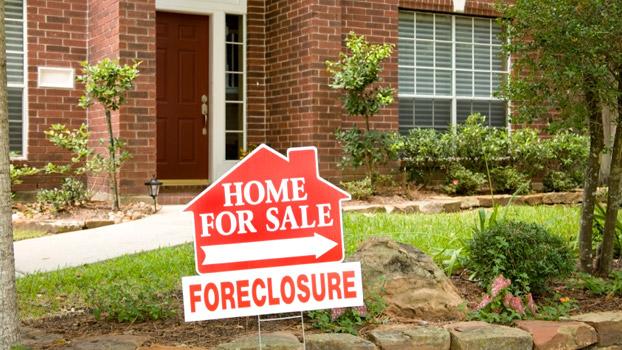Ethan Roberts is a real estate writer, editor and investor. He’s a frequent contributor to InvestorPlace.com, and his work has been featured on Money.msn.com and Reuters.com. He’s also written for SeekingAlpha.com and MarketGreenhouse.com, and was one of five contributing editors to TheTycoonReport.com. He’s been investing in real estate since 1995 and has been a Realtor since 1998. He also teaches classes on investing in residential real estate.

Investing in long-term rental properties can be quite lucrative, if and when it’s done correctly. However, just as with all investments, there are some risks, and not everyone who invests in rental properties has good experiences. I’ve been a successful landlord of single-family rental homes for 18 years, and during that time I’ve seen more than a few landlords quit because they were either losing money or just barely breaking even.
That’s a shame, because the landlording business should be highly profitable under normal circumstances. So what went wrong for the investors who didn’t succeed? They made some common mistakes, which I’ll describe in a moment. First, let’s talk about a key way to measure success: return on investment (ROI).
Determining ROI
For me, successful landlording is all about maximizing my ROI. Simply defined, ROI measures the efficiency of an investment. It’s calculated by dividing the return you realize from the investment by its cost. The result is expressed as a percentage. Here’s the formula:
(Gain from investment − Cost of investment) ÷ Cost of investment = ROI
For example, say you buy a house with cash for $120,000. You spend another $10,000 on repairs and improvements. Your total investment cost is $130,000. You rent the house for $1,400 a month, or $16,800 gross annually, and have no more repairs over the following year.
Your gross ROI would be: $16,800 ÷ $130,000 = 12.9%. You can also figure out the net ROI by subtracting any additional costs, like insurance and taxes, from the gross rent. Many of my properties have double-digit gross annual returns, and yours should too.
Mistakes that Lower ROI
But maximizing ROI isn’t just about buying a house and collecting rent. You might experience a number of variables throughout the year that will increase or decrease your ROI. For example, landlords can increase ROI by charging a one-time pet fee of $300 or charging a late rent fee of $10 per day. Tenants can decrease ROI by not paying their rent, moving out prematurely, or damaging your property.
Here are the top ROI-lowering mistakes I see landlords make:
1. They aren’t selective enough in their choice of tenants.
Expenses like non-payment of rent or premature move-outs are often the results of landlords not being picky enough about who they rent to. You must always choose tenants carefully, and run credit reports and background checks by contacting their previous landlords and workplace. It doesn’t hurt to run a criminal check, either.
2. They don’t treat their investment properties like a business.
Some landlords choose the first tenant that comes along, regardless of their background, and then get stuck with a costly situation. Conversely, some landlords feel that if they know someone, that person will make a better tenant, so they allow relatives, friends, or colleagues to rent from them. But then if the tenant has difficulty paying rent, the landlord is unable to be firm and assertive with them. This is a classic failure to treat one’s real estate investments like a business, and it can crush your ROI.
3. They let small repairs linger until they become more costly.
Still another mistake that landlords make is being cheap about fixing problems in the house right away. Sure, it detracts from your ROI every time you have to make a repair, but it’s always less expensive to correct a minor problem before it becomes a major one. Think of a roof leak that begins with a small stain or drip. At the onset, it doesn’t cost much to fix. But let that roof leak go for a year and see what kind of repair bill you’ll amass.
4. They aren’t selective about the properties they purchase.
Being selective about investment properties will also help your ROI. I only purchase homes that were built after 1978, so I don’t have to deal with lead-based paint issues, galvanized steel pipes, settlement, and other costly problems of older homes. I also favor homes of less than 2,000 square feet, because homes larger than that become much more costly to maintain.
5. They buy homes in run-down neighborhoods.
I avoid homes in run-down neighborhoods because the tenants are often transient, which can increase the chance that they’ll move out prematurely, pay the rent late or miss rent payments altogether. In addition, homes in these neighborhoods sometimes incur additional costs from theft or vandalism to the property. These kinds of costs can crush your bottom line.
6. They buy at the peak of the real estate market.
It’s a good idea to avoid buying homes near the peak of the real estate market. But how do you know when the peak is at hand? A few indicators that I’ve seen are: the homes become quite expensive in comparison to previous prices; rental ROI drops into single digits; and landlords carrying a mortgage have either a negative or flat cash flow.
If you avoid making these mistakes and follow my suggestions, you should find that you’ll have much more success as a landlord, and a much higher ROI at the end of the year. And those higher annual returns really add up over the years to help you build long-lasting wealth from your real estate portfolio.
This information was originally published on Auction.com, LLC, the nation’s leading online real estate marketplace. Founded in 2008, the company has sold nearly $20 billion in assets since 2010.